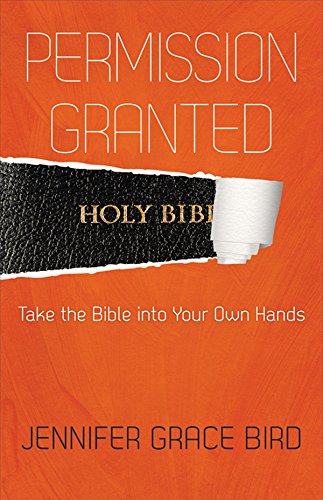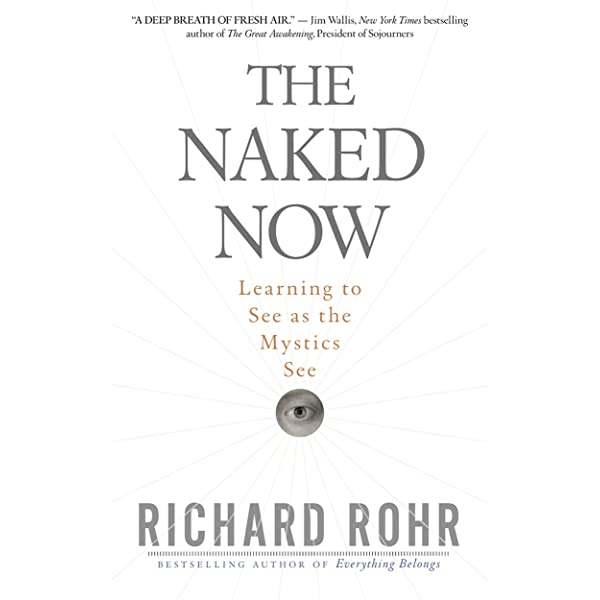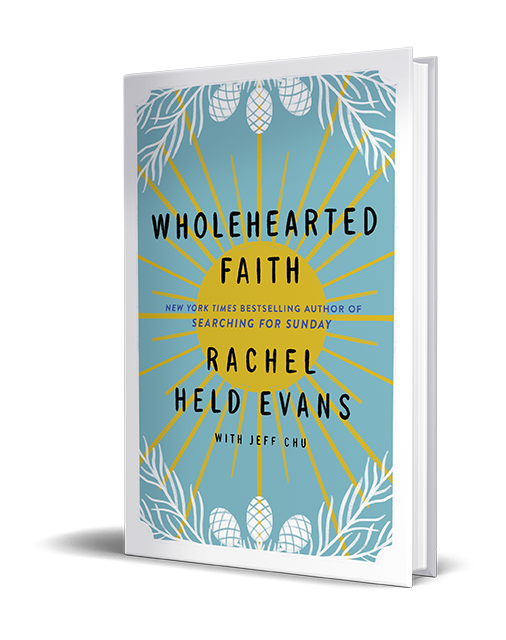Louisville Kentucky: Westminster John Knox Press, 2015. Pp. 189. Paperback. ISBN 9780664260408.

Some say that Christianity is dead. The Church is dying; there is no truth. Yet, we live in a time of emergent scholarship in theology with different voices and perspectives challenging centuries of understanding of Biblical scholarship. In the last 200 years, textual scholarship of the Bible has changed significantly with the increase in archeological finds, widespread knowledge of original Biblical languages, studies of the histories and policies of Biblical translation, and the growing power of previously disempowered peoples, like racial minorities, women, and LGBTQ people. All of this makes “traditional” readings of the Bible and the people who profess and cling to them terrified of the changing landscape of religious belief. Into this religious diaspora, Jennifer Grace Bird releases Permission Granted, a book dedicated to introducing traditionalists to new ways of thinking about familiar Biblical texts. Her premise is to give permission to her readers to think about things differently, not to destroy their faith, which can be taken as good or bad, depending upon your place on the religious political spectrum. Like others (including this blogger), Bird seeks to combat the idea that literal translations of the Bible are controlling in modern religion and ethics. In fact, she questions if you can interpret the Bible is ways that are helpful rather than hurtful by letting go of traditional ideas, especially if we have permission to call those ideas suspect.
To begin, this is one of those books where you should read the Introduction. In this case, the Introduction does exactly what its name implies – it introduces you to the author. Since this book is likely challenging for some readers, Bird attempts to introduce herself and her journey of study and scholarship, so that readers may identify with her motives. Like many in her targeted audience, Bird was a model conservative literalist when it came to her reading of the Bible (xii). She struggled with her Mother’s ordination, which she viewed as a violation of Scripture (xii). And, even though Bird had great talent in both leadership and ministry, she believed that the Bible prohibited her from being a pastor or church leader (xiii). Then, a friend of hers changed her views by sharing her own master’s thesis about “Martha and Mary” (xiii). Through the efforts of these two women, her Mom and her friend, Bird was given “permission” to seek her own place – to be true to herself (xiii). Bird went to seminary, got her doctorate, and had all her prior beliefs tested in the fire of scholarship. Now, in Permission Granted, she seeks to give others permission to ask serious questions about the Bible and their owns beliefs (xiv-xv). Bird doesn’t seek to destroy faith, which is a common feeling in seminary; rather, she seeks to encourage active engagement (xv). Quoting Aristotle, Bird asserts, “It is the mark of an educated mind to entertain a thought without accepting it” (xv). Following this Introduction, Bird then presents twelve questions in twelve chapters on challenges to traditional readings of the Biblical texts.
Chapter 1, “What the Bible Is and Is Not,” begins with the fundamental question regarding the actual construction, purpose, and function of the texts (1). Meaning, right out of the box, Bird takes on the applicability of the term “inerrant” (1). Noting that the Bible is a book written from oral texts, constructed from multiple source documents, written over many years, drafted by different writers with different motivations, and translated from and into many languages, the notion of “free from error” is troubling, and possibly dangerous, for those seeking to find God amidst the challenges of the texts (1, 6-11). For Bird, these ideas are hard for people because they want to equate God’s perfection with perfection in the canon (3). Questions like “what does God-breathed mean” are important, so we understand the lens through which we are reading the texts (4-6). Bird also emphasizes that language matters in her side bar regarding the names that we use for the Biblical texts (2). Exchanging “Hebrew Bible” for “Old Testament,” and “Newer Testament” for “New Testament,” Bird asserts that the names we use for the Bible are part of our bias when reading the Bible (2-3). Words matter, and how books are written matter.
For those that did not stop reading after Chapter 1, Chapter 2 gets into the nitty gritty of the genres used in the Biblical texts by starting at the beginning, Genesis, and its two stories of creation (13). Like Bird, I find it fascinating how the two stories are so distinct, yet the Church has over the centuries melded them into one. But, before Bird gets to the troubling interpretations of Genesis and its likely contribution to toxic patriarchy, Bird uses the word “myth” in reference to the Bible, which is troubling for those needing the Bible to be literal (13). While scholars understand “myth” to be a story people used to explain the unexplainable, most people today equate it with “falsity” (13). Harkening back to “inerrant,” people get really uncomfortable when you try to look through the “myth” of women being created from men, and what the writers might have wanted to show us about God (19-22). Bird wants readers to see that “Reading the Bible ‘literally’ is not necessarily the best way to honor it” (16). If we look at the myths of the Bible, we can also draw parallels to other cultures, which opens dialogue with other faith traditions (22-3).
In Chapter 3, Genesis 3 is examined with an eye toward, “What Really happened in the Garden?” (25). Was Eve framed? Is there a “Satan” and what was his role in the “Fall?” (28-9). Personally, my experience in History of the Bible in Seminary was kindled by Bird’s discussions as I remembered my classmates’ heads’ exploding at the notion that “Satan” was “Ha-satan,” meaning “accuser,” not “Devil” as traditionally understood (28-9). Bird also points out that it was the original church “fathers,” often celibate males well-established in patriarchy, that created the ideas of “original sin,” and how that affected the sexual relations between men and women (and now, LGTBQ people) (30-2). Rather than wholly rejecting these ideas, Bird encourages her readers to engage with Genesis in a new way by giving them permission to ask the questions regarding context, church teaching, patriarchy, and myth.
Really challenging is Chapter 4, because Bird raises questions about how our views on sex were affected by how sex is depicted in the Bible (35). While some might see Chapter 4 as overtly feminist, Bird backs up her discussions with theology exegesis (we will come back to this word in later blogs) about what we actually see in the Bible and puts modern words to the behavior – rape, incest, polygamy, adultery. When we look at the idea of “Biblical marriage” with modern lenses, it calls into question persons relying on the Bible as authoritative of personal, sexual relationships, and marriage in today’s context. Polygamy was commonly accepted in the narratives of the Bible but is not acceptable today; Bird asks how you can point to the Bible for “Biblical marriage,” when we have outlawed or rejected so many of the relationships depicted in the Bible (36). Levirate marriage and forced marriage to your rapist have been rejected in our society completely, but they are examples of “marriage” in the Bible (36-8). Moreover, as Bird points out, all these relationships are really about the value of property, i.e., a woman’s virginity, not about actual chosen, loving relationships, like those in today’s context. So, Bird points out that if we look at these Biblical narratives for their content rather than through the lens of “the infallibility of Scripture,” we might reject imposing the Biblical “rules” on modern relationships. Chapter 4 is rich in modern questions regarding homosexuality, purity codes, the emphasis on procreation versus joyous union with your partner, and other sexual issues (42-54.) Bird really draws out how much our interpretations, perhaps relying too much on patriarchal ideas from male celibate teachers, have affected our modern notions of sex.
Moving from a discussion of rape in Chapter 4, straight into discussion of violence in Chapter 5, Bird encourages readers to notice all of the violence in the Bible. Our culture is so accustomed to violence and the language of warfare that we hardly notice the violence in the Bible. Bird notes that the Bible is replete with “battle imagery” (56-8). She questions how battle imagery affects our relationships with others – if God be for us, then do we have to give quarter to our enemies? These ideas affect our judgment of war and justify violence. Further, the extreme punishments dealt out in Genesis, Exodus, Leviticus, Joshua, and Acts cause us to fear a vengeful and vindictive God, not experience a loving God of hope (58-61). Bird grants us permission to look at the violence and ponder “Who is my enemy” and how must I treat them?
“Covers-Ups and Edited Stories” are described in Chapter 6 (75). Many people will stop reading and grab their Bibles at the discussion of whether David killed Goliath (Bird almost ruined my favorite Bible story) (77-9). Bird points out that readers should be troubled by their prior understandings of David when the stories of Bathsheba and Tamar are put in their proper context of rape, incest, and adultery (79-82). And, Bird takes on my personal favorite to argue with folks, Jonah and the “whale” (83). Bird points out that the story of Jonah is political and about God’s relationship to mankind, not about making science prove that Jonah could have lived inside the whale or fish or whatever name you want to give it, because purpose of the story has nothing to do with the whale (84). Likewise, Bird takes on notable and damaging misconceptions in the Newer Testament, such as the fact that Mary Magdalene was deemed a prostitute by early church “fathers,” not the Bible (86-89). The Patriarchy is in full effect and truly has colored the view of women in the Newer Testament by this complete misidentification of Mary Magdalene – yet funny how she is the first person to see the resurrected Jesus.
Chapters 7 and 8 take on the roles of women in the Bible and the immaculate conception. To Bird, the traditional rendering of the Bible limits women to submissive roles of homemaking and procreation. As Bird points out, there was a high value placed on motherhood (96-102). Yet, there were women who followed and financially supported Jesus, and Paul was complimentary of women in the early churches (102-112). Here, Bird takes time to note the discrepancies in the accepted and disputed texts of Paul regarding authorship, because Paul’s “genuine” writings support the equality of women while the disputed texts do not (105-19). Bird questions if the disputed texts were efforts by the early church to protect themselves in a culture where patriarchy was the norm (112-19). Going from the topic of the role of women in the church to the role of a woman in the birth of Jesus, in Chapter 8, Bird discusses the emphasis of the “virgin birth” of Jesus as being intertwined with our notions of original sin and purity (121-9). Chapter 8 challenges readers regarding the necessity of a virgin birth (and the continued virginity of Mary) for the divinity of Jesus.
“Will the Real Jesus Please Stand Up?” is the title for Chapter 7, which dives into the differing accounts of Jesus in the four Gospels. After juxtaposing ancient biographies (which were significantly less detailed) with their modern counterparts, Bird takes on the thesis put forward by each of the Gospel writers. Bird confirms that each of the four Gospels was written by a specific person for a specific audience with a specific argumentative purpose (133-52). Bird emphasizes that knowing the author, context, and argumentative purpose of the Gospels is important to Biblical scholarship and faith. In analyzing each Gospel, she imparts how understanding the underlying context allows readers to better understand the treads of faith being offered by the authors.
Taking on Paul in Chapter 10, Bird describes Paul in all his enraged, complex, and sometimes contradictory, glory. Asking if Paul was the first Christian, Bird reminds readers that Paul is a devout Jew in culture, religion, and every fiber of his being. So, first and foremost, his “conversion” is extremely important to understanding his ministry (156-8); however, like other parts of the Bible, this “conversion” story is told with inconsistencies, which a student must hold without judgment (156-8). Bird goes on to show that Paul’s relationship with the Disciples may not be what we have accepted as church teaching – Paul may have been exactly as hard to deal with as it feels when you read his letters (158-61). And what does “Paul’s Gospel” mean? Bird points out that Paul, a Jew and to some the “first” Christian, uses a lot of Greek ideas to get his messages across (164). For Bird, Paul, like the rest of the Bible, is more complicated than we sometimes want to accept.
Bird’s take on the idea of “interim ethics” is the topic of the final substantive chapter of Permission Granted, Chapter 11, titled “Judgment Day is…Not Coming” (167). Here, Bird discusses the pervasive misuse of apocalyptic literature, which would be humorous if people did not frequently die from it. For Bird, the misuse of apocalyptic imagery, especially in Revelations, is a dangerous misapplication of the Biblical texts (174-85). Whether the reader agrees with Bird or not, she does make a point at how an inexperienced student can create great harm without significant study of these texts and their underpinnings.
Finally, Chapter 12 is a short exposition on “Now What?” In this Chapter, Bird seeks to encourage readers to keep searching and studying, not to take the Bible literally. Bird believes that exhaustive study and questions are permissible. Thus, she cleverly named the book Permission Granted so readers would know that they have the freedom to question and study.
In sum, Bird’s work is a thought-provoking theological discussion. It is definitely a heartfelt and personal account of Bird’s initial struggles moving from more traditional, literal readings of the Bible to a more curious and open understanding. Readers can definitely feel her personal struggle in the Introduction. This book is excellent for providing a brief scholarly understanding of some serious inconsistencies within the Biblical texts. Bird covers a lot of ground with the various issues she raises for readers. Personally, I found the book well-organized and easy to follow. The topics flow well from one to the other, and a lot of major themes are discussed. Also, if you are familiar with or research Bird’s theological background, you can hear similar tones to some of her intellectual influences. In this book, she takes the approach of a good Newer Testament or History of the Bible professor, which is a challenging job in seminary because if properly done, you are messing with students’ firmly held beliefs.
Having enjoyed the book, I have two criticisms of the text. First, there are times, like the titles of chapters, where Bird diminishes respect to get a laugh. I think the book is full of good information and I enjoyed the funny chapter titles, but if prospective readers are more emotional about respecting the Biblical text, the chapter titles and tone might be insulting or irreverent. There are people who would pick this book up in the bookstore, read the chapter titles, and then put it back down. Since Bird is trying to convert people with staunchly held beliefs into being more open and curious, she may have missed the mark. I was intrigued by the title and liked the tone, but I am not like a lot of the traditionalists that I know. Perhaps it was an editing or sales choice, but looking at it from the perspective of others, I thought it came off flippant.
Second, there are no references! I love her exegesis but would have liked references to other scholars. Personally, there were several ideas that Bird raised that I would like to further research, but she didn’t provide any additional texts or citations. Seriously, not a single note, footnote, endnote, or post-it note. How can I deep dive into my faith, as Bird suggests, if she isn’t going to help me out with other sources? The lack of citations does not help her build consensus with her critics. If I were a strict constructionist, as we say in legal circles, I would say that no one else agrees with her, because she does not cite any authority or supporting documentation for her ideas. While the lack of sources does not invalidate her ideas, it does not help to convince a tough audience that there is support in the greater scholarly or faith community either. For me, this is a major problem with the book. Personally, I would hope that she might correct this in a later edition.
Notwithstanding these criticisms, I thoroughly enjoyed Permission Granted. I think it is a great introductory book for those people seeking validation for their questions about literal interpretations of the Bible. I would certainly recommend it to other seekers.



